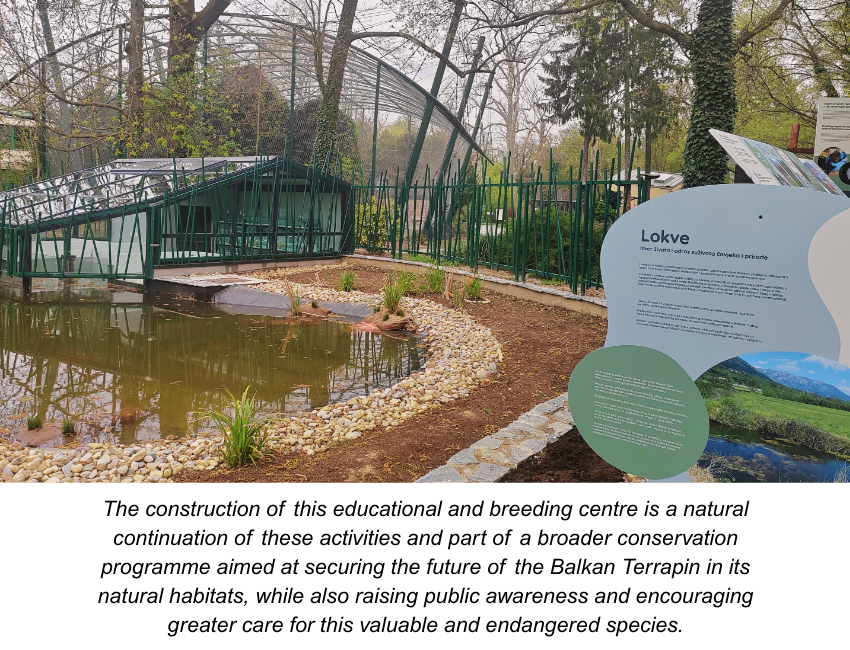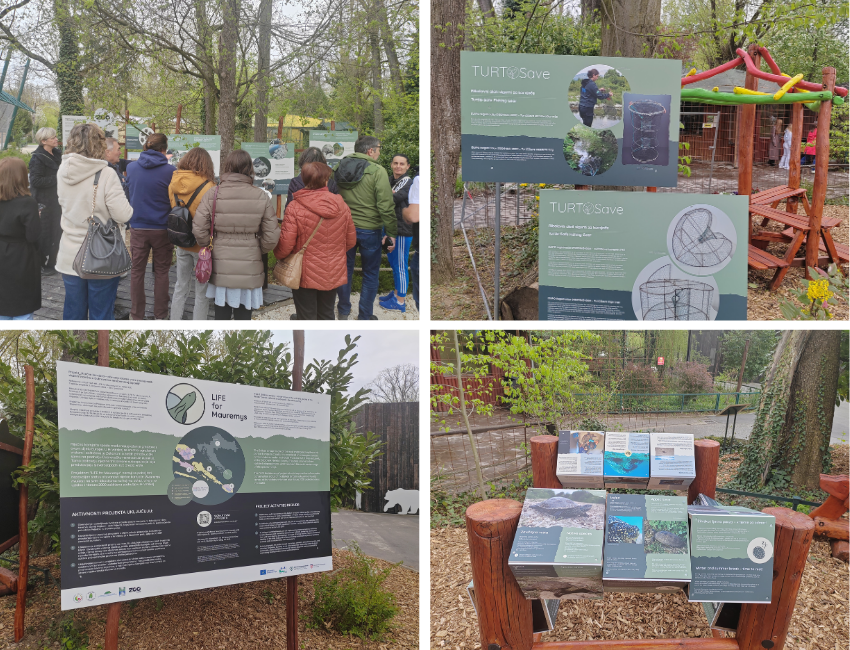Breeding Centre and habitat for the Balkan Terrapin at Zagreb Zoo
On Tuesday, 8 April 2025, the Zagreb Zoo officially opened its new breeding and educational centre for the Balkan Terrapin. The new facility covers 200 square metres and includes an indoor area with pools and aquariums, as well as an outdoor section with two separate pools for adult turtles. A dedicated space for breeding hatchlings has also been provided. The total investment in the construction of the centre amounted to €181,000.

The Balkan Terrapin habitat is an important part of the Zoo's breeding and educational activities, but also a new attraction that allows visitors to get a close-up view of this endangered and secretive species. The design of the habitat was inspired by the terrapin’s natural environment, with a distinctive feature being the use of glass walls and green metal bars symbolising reed — a typical plant of the wetland habitats of southern Croatia. In addition to the breeding area, the centre offers an educational zone where visitors can learn about the biology of the Balkan Terrapin and its natural habitats, as well as the importance of conserving this species for the protection of natural heritage and biodiversity of Mediterranean wetlands. Special attention is given to Konavle Field, the ponds in the Majkovi area, and Ston Field — the only locations in Croatia where the Balkan Terrapin is found.

The opening of this centre marks an important step in the long-standing efforts to protect the Balkan Terrapin in Croatia. These efforts have been supported by numerous achievements, including the adoption of the Balkan Terrapin Management Plan with an Action Plan (2021), the designation of the Lokve in Majkovi area as a Special Herpetological Reserve (2022), and the launch of the LIFE for Mauremys project (2022), which focuses on breeding and reintroducing terrapins into the wild.
As part of the LIFE for Mauremys project, the Zagreb Zoo plans to breed 40 Balkan Terrapins by October 2026, which will be included in activities for the conservation of wild populations. So far, more than 30 hatchlings have been successfully bred, representing a significant contribution to the conservation of this species and the implementation of the project.
